PROTECT YOUR DNA WITH QUANTUM TECHNOLOGY
Orgo-Life the new way to the future Advertising by AdpathwayWhether infilling bare patches to refresh the display or adding color to kick off a new season, fast-growing plants are ready to fill any gaps.
From speedy annuals to perennials that quickly grow full and leafy, bare or fading patches soon revive. Sow the quick selections from seed or begin with nursery specimens to get a jump on growth.
When sowing seeds, use the crop’s days to maturity to ensure enough time to enjoy them before their optimal conditions change (i.e., freezing or hot temperatures arrive). Enjoy the nearly instant gratification and boost in curb appeal with the best plants to fill garden gaps, either for a season or years of recurrent interest.
Apricotta Cosmos


Oriental Nights Sweet Alyssum Seeds
Zeolights Calendula

Zeolights Calendula (Pot Marigold) Seeds
Cosmos
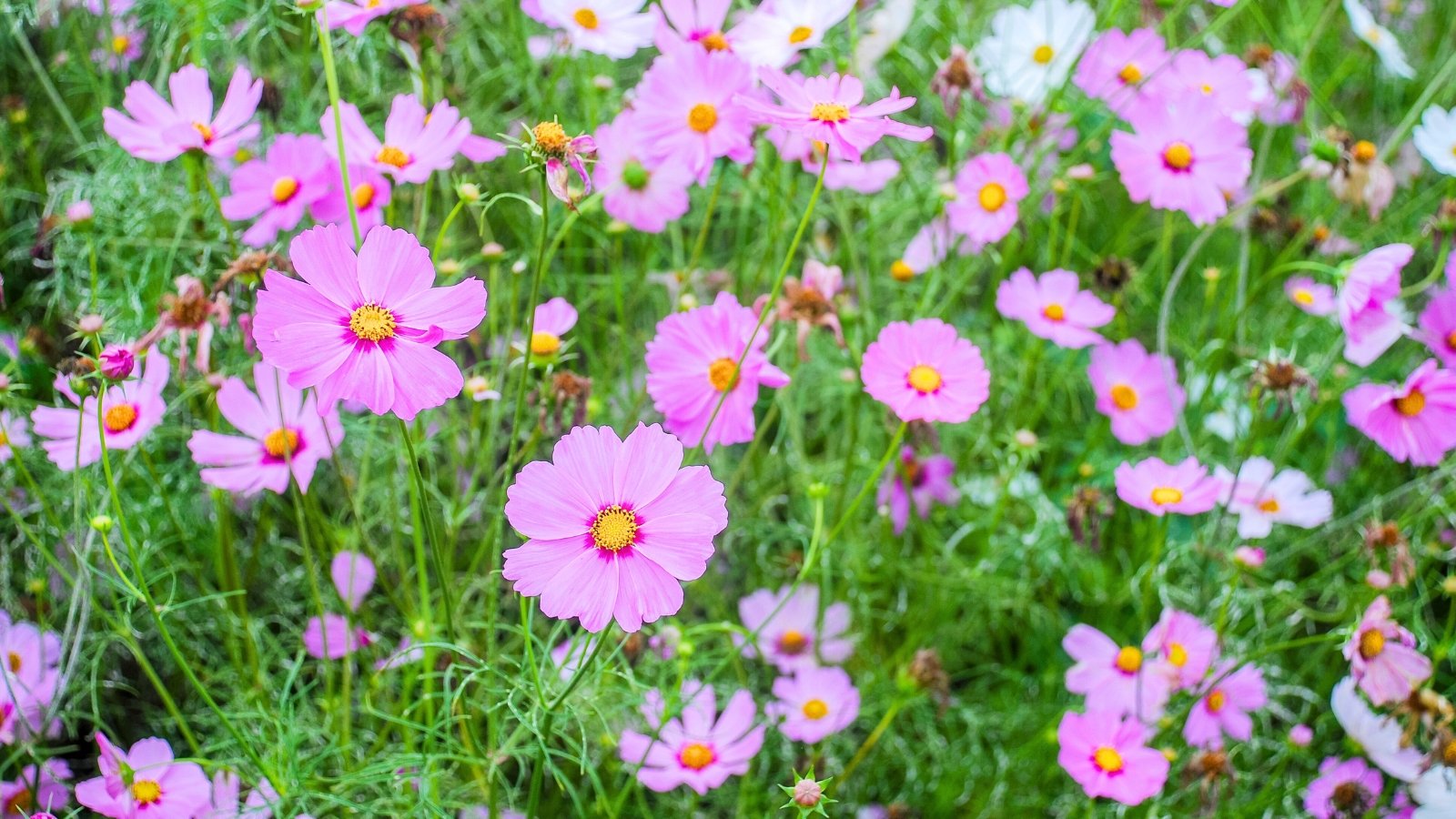 Blooms from summer to frost with little care.
Blooms from summer to frost with little care.Sun-loving cosmos bloom all summer with ray flowers that float on tall, airy stems. Native to the Americas, the annual wildflower shows color through frost. In vivid shades of yellow, apricot, pink, red, chocolate, and many more, flower forms are single or double and are a pollinator favorite.
Cosmos reseeds at season’s end and tolerates hot, dry conditions with variable soils. The low-maintenance annuals thrive with a bit of neglect, and too much water, fertilizer, and organic richness hamper their growth.
Grow cosmos easily from seed to flower in about 60 days. Their fast development makes them suitable plants to fill gaps in summer gardens. When flowers finish blooming and go to seed, cut plants back to 12 to 18 inches for a quick rebloom. Let the cut stems fall in place so new seeds germinate for the next generation of blooms.
Zinnia
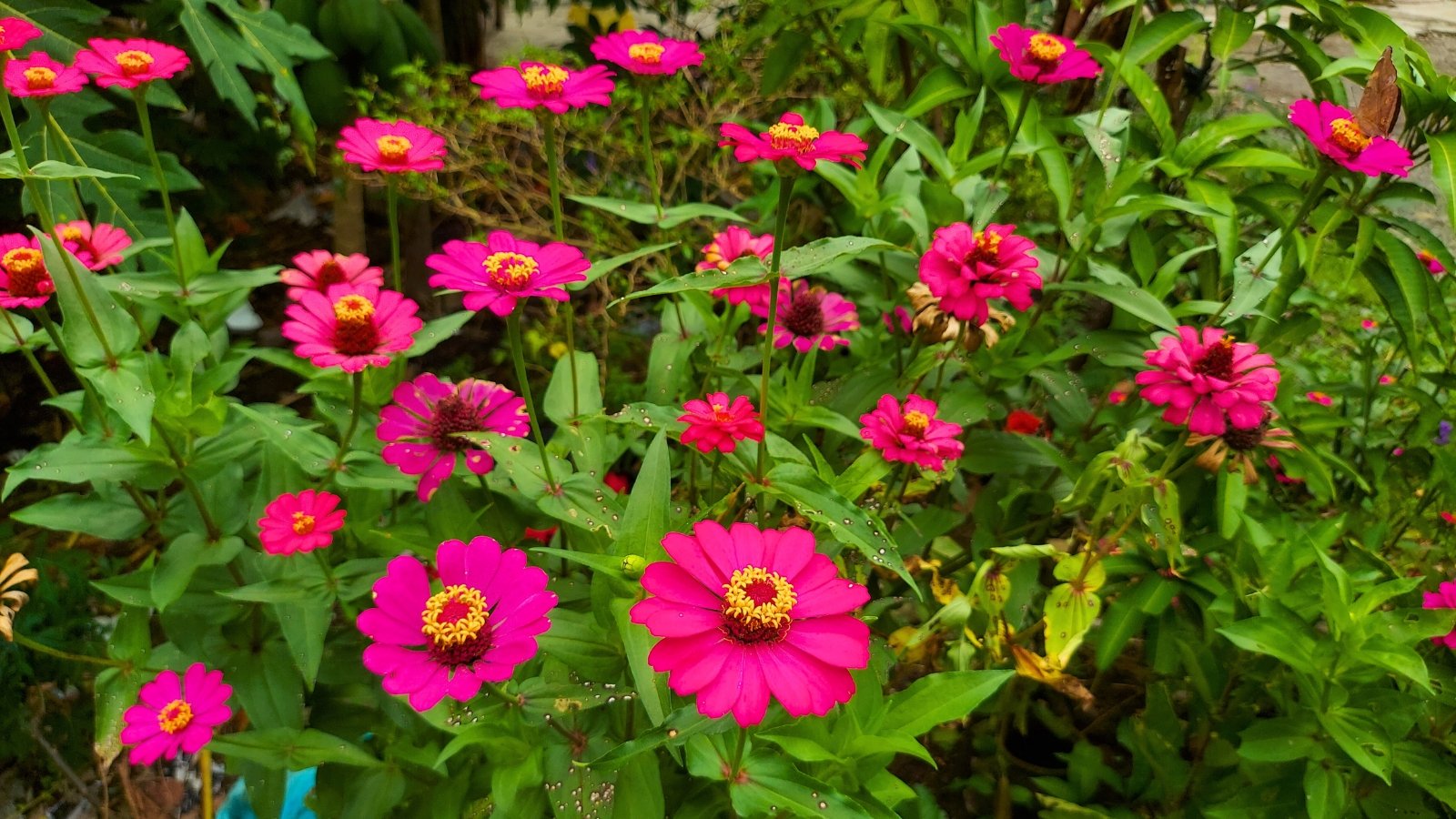 Deadheading keeps the flowers coming all season.
Deadheading keeps the flowers coming all season.Like cosmos, zinnias bring dynamic annual color with vibrant double-disc flowers. The blooms range in color from lime to magenta to yellow. Heat-loving, they bloom continuously from early summer through frost.
While not essential, deadheading promotes quicker reblooming. Sow a successional round if the blooms start to wane after producing vigorously earlier in the summer. The cut-and-come-again blooms are cheerful in a vase while fostering more flowers for the garden.
Zinnias are easy to grow from seed and produce in about two months. They benefit from good air circulation, well-drained soil, and full sun for the best vigor. In growing areas with high heat and humidity, look to disease-resistant varieties like the tall ‘Queeny’ and the dwarf ‘Profusion’ to bring a colorful show.
Coreopsis
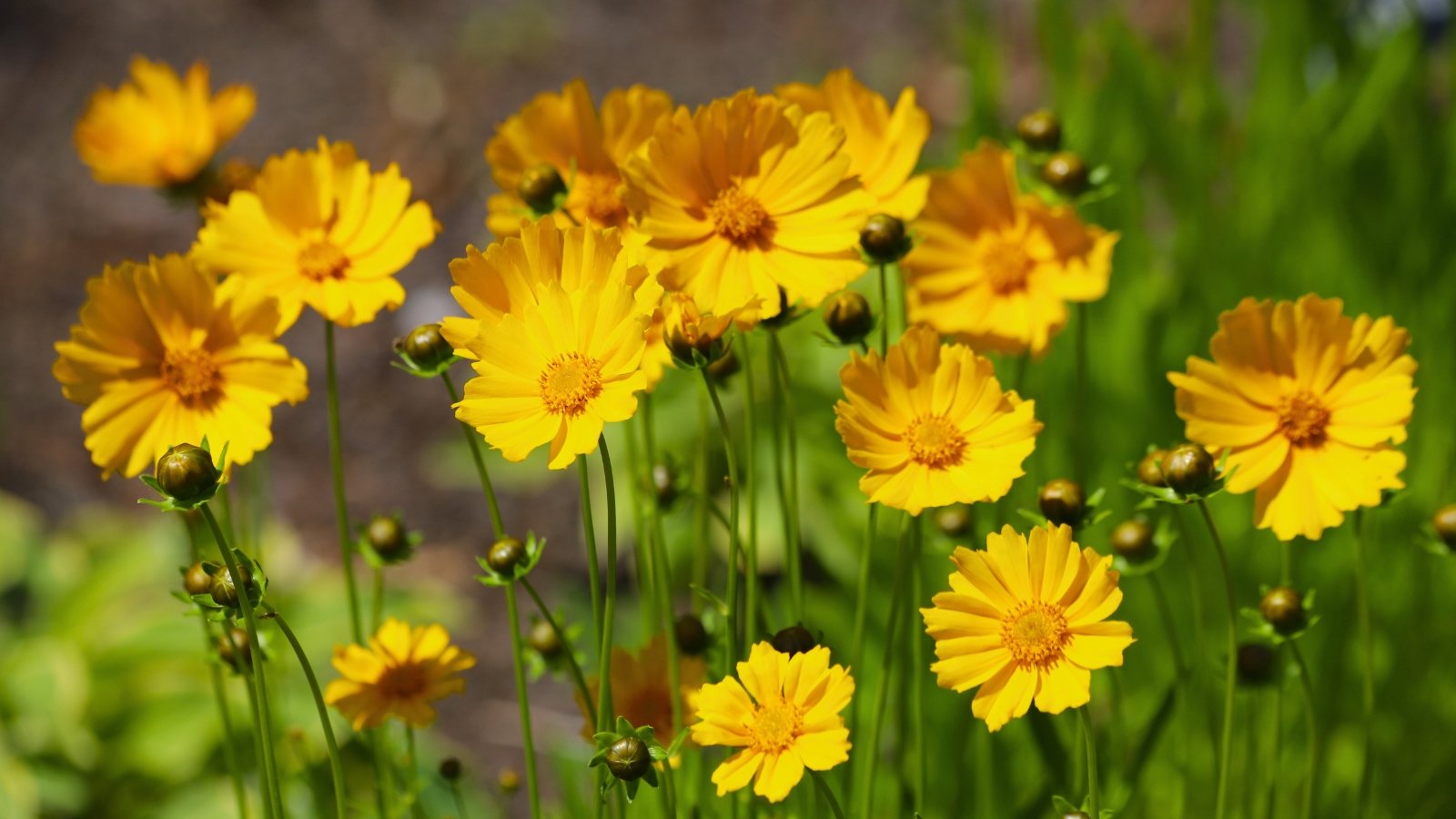 Self-seeds and feeds songbirds into winter.
Self-seeds and feeds songbirds into winter.Coreopsis is a fast-growing perennial and native North American wildflower. With an extended bloom season from early spring through late fall, it brings a burst of sunny yellow to infill planting gaps and brighten the border. One of the first to show in spring and one of the last to fade, pollinators appreciate the transitional resources.
The species has golden yellow flowers, with cultivars in light yellow, pink, scarlet, and white. Some have fuzzy double blooms or fringey petals and feathery foliage.
Coreopsis is drought and heat-tolerant. It self-seeds readily to expand the colony in the following seasons, making it one of the best plants to fill gaps in the garden. Songbirds forage on the seeds into fall and winter.
Violas and Pansies
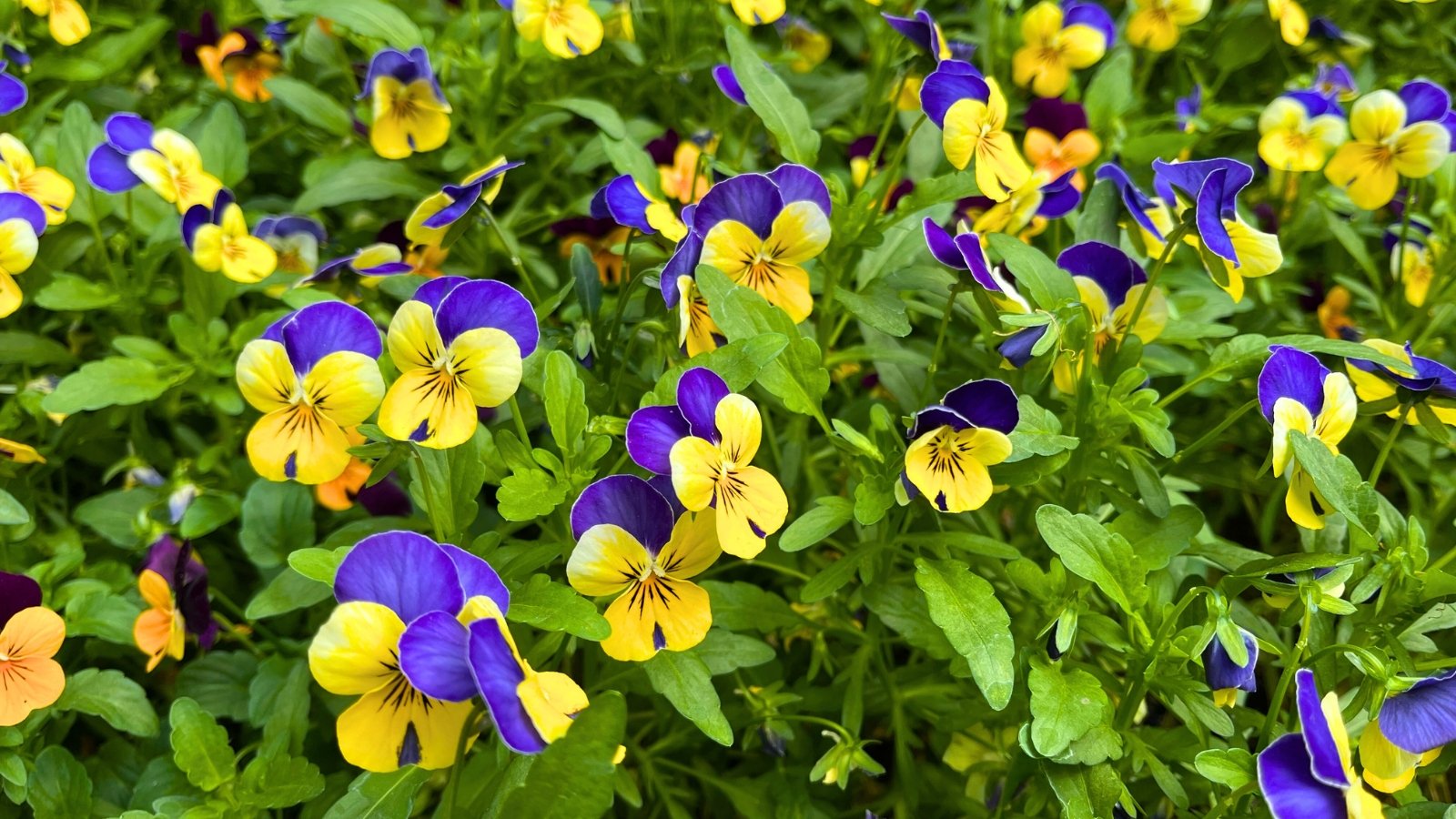 Cold-hardy color for beds and containers.
Cold-hardy color for beds and containers.Violas and pansies are frost-tolerant annuals that thrive in cool conditions. The petite, cold-hardy plants tuck in easily to fill gaps in pots and containers, as well as in the annual bed. Let their colorful faces add cheer to planters, window boxes, and hanging baskets.
Pansies and violas tolerate temperatures in the 20s (-7°C) and sometimes lower, depending on conditions. Leaves may turn gray during cold snaps and recover as temperatures warm.
Pansies and violas are easy-to-grow annuals. Provide well-draining soils and consistent moisture for the best flowering. They benefit from deadheading to promote more blooms (pansies, especially, with larger flowers). Pinching the fading blooms channels energy away from seed production and into further flowering.
Calendula
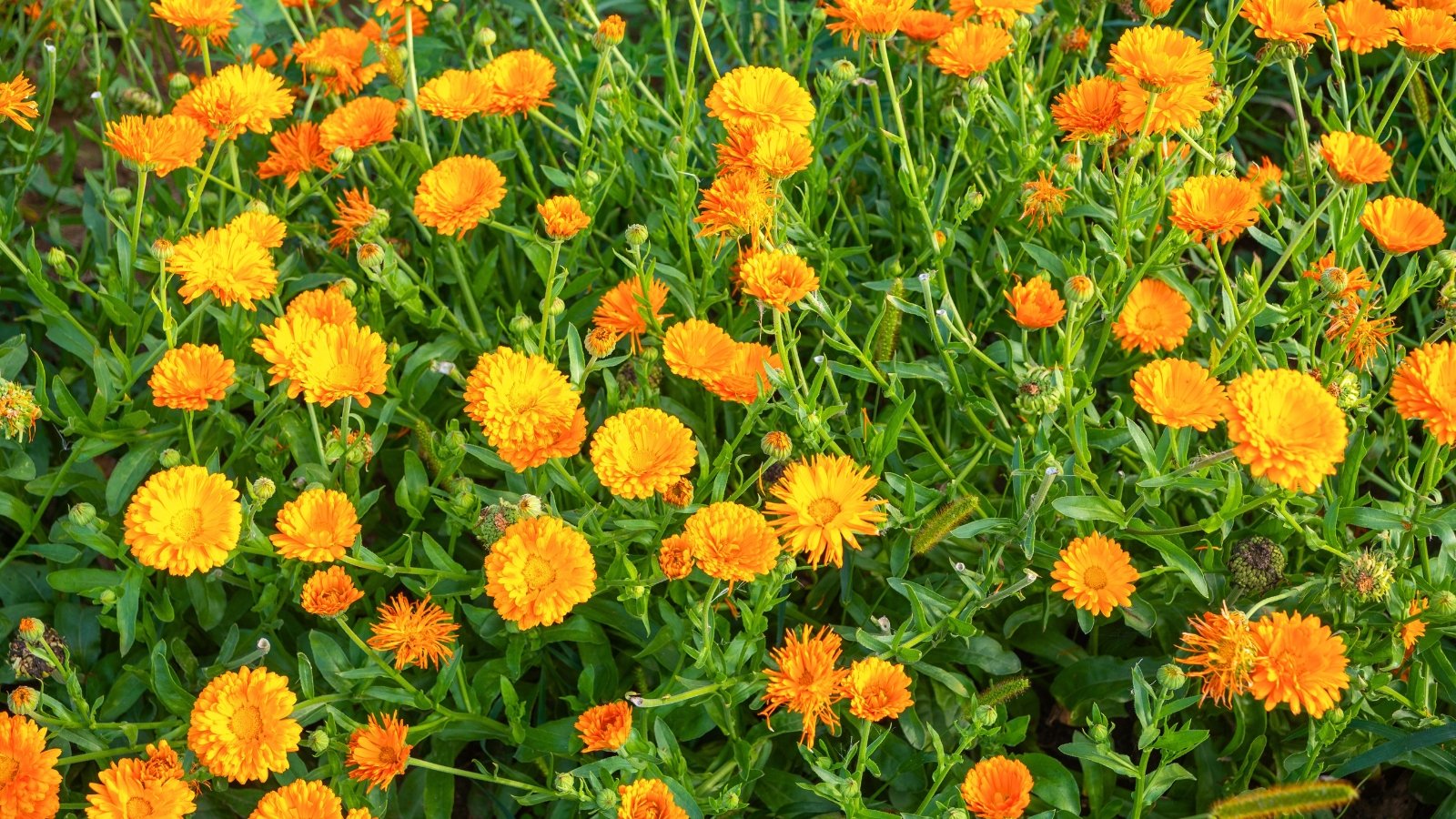 Buds appear just a month after sowing.
Buds appear just a month after sowing.Calendula is quick to color, with buds forming in as little as 30 days after sowing seeds. The flowers and leaves are edible and last in fresh floral arrangements. Ray petals are yellow, orange, pink, and bicolor with single and double blooms.
Calendula grows best in the cool conditions of fall and spring. In warm climates, it performs over the winter. In cool climates, the flowers appear from spring through frost and take a break in the peak of summer heat.
Because they’re speedy, sowing a round in mid to late summer offers color through frost. They tolerate chilly conditions and may self-seed for a spring bloom.
Petunia
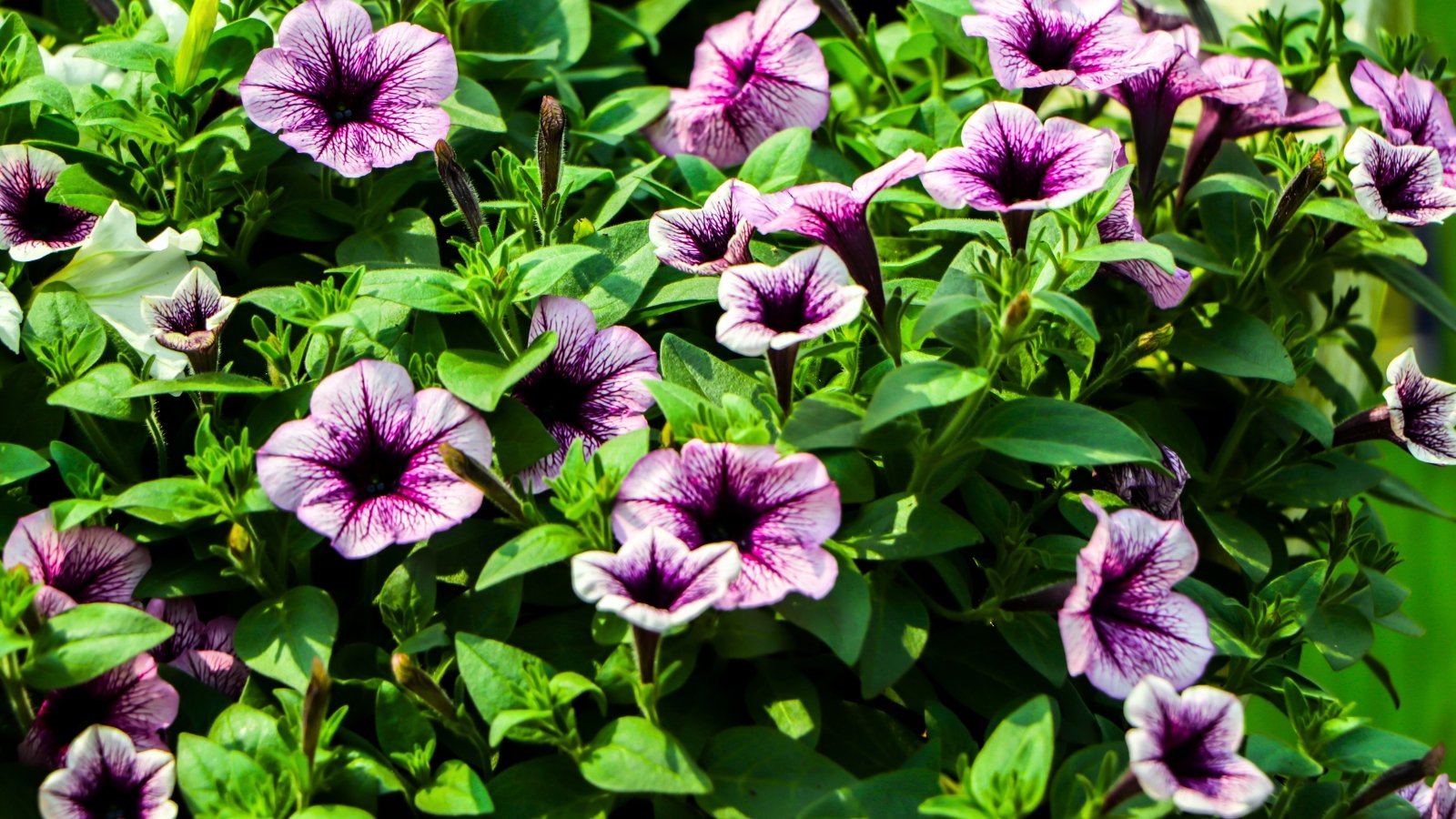 Cut back in midsummer for a fresh flush.
Cut back in midsummer for a fresh flush.Petunias, with their profuse tubular blooms in nearly all colors, make showy plants to fill gaps and spill over a bed edge, hanging basket, or container. The summer annuals show color through frost, taking a break in peak summer heat.
For the fastest infill, opt for reliable performers like the Supertunia and Easy Wave series for dense blooms on stems that both mound and trail. They boast improved heat performance for durability that ensures lasting summer color across climates. Cut back stems in mid-summer for revitalizing new growth.
Petunias are easy to grow from seed and cuttings, even rooting in water. Propagate the annuals (unpatented varieties) to make more plants to fill garden gaps.
Arborvitae
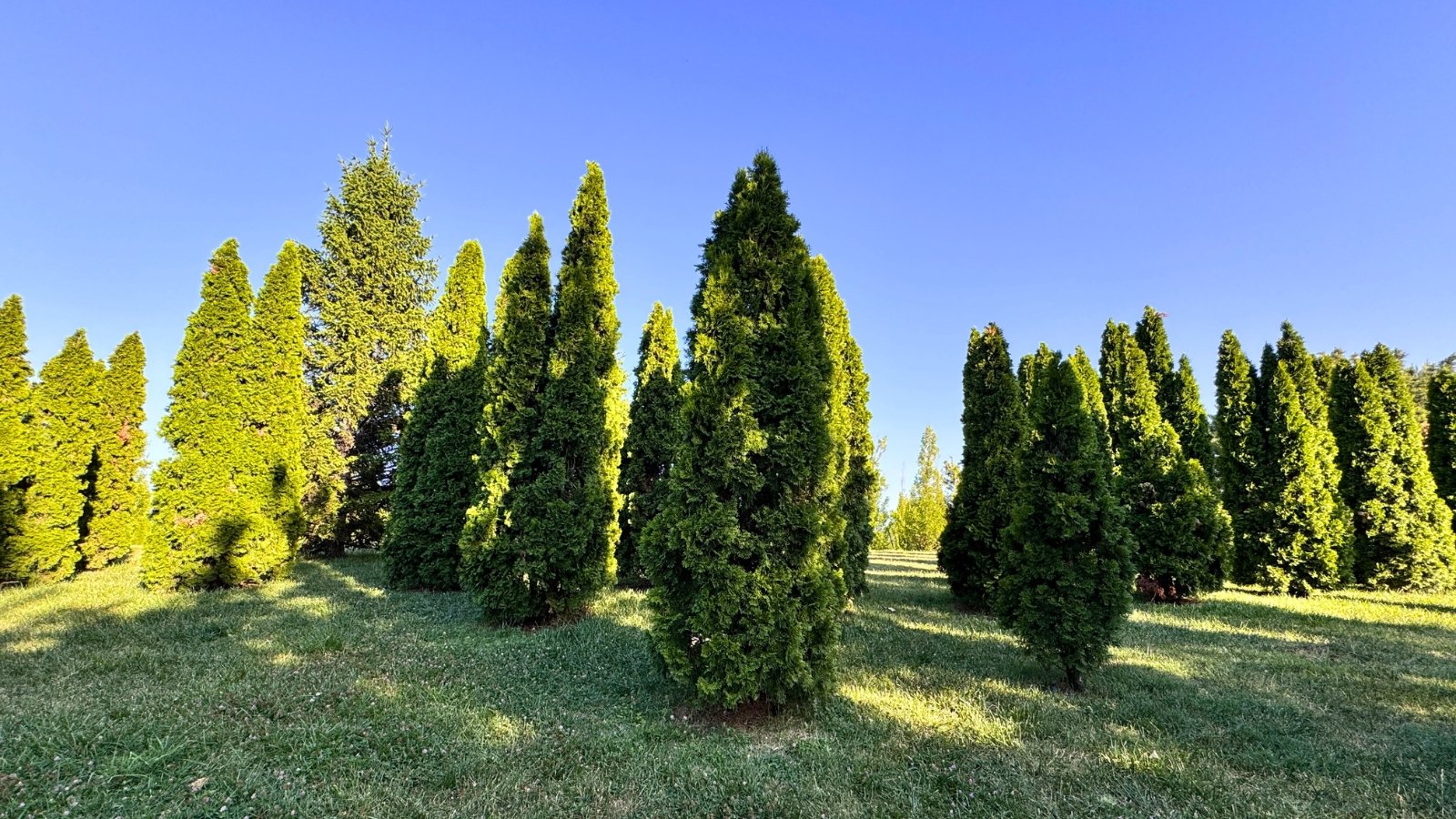 Grows several feet a year for quick screening.
Grows several feet a year for quick screening.Arborvitae is a fast-growing plant to fill gaps that benefit from vertical interest. The Eastern U.S. native species has many cultivars that suit a variety of growing zones and site conditions. The evergreens have dense, flat foliar sprays on forms that range from columnar and upright to low and rounded.
‘Emerald Giant’ is a pyramidal evergreen that adds about three feet of growth each year. It reaches 50 to 60 feet tall. ‘Emerald Green’ (Thuja ‘Smaragd’) quickly reaches 10 to 15 feet. Both are vigorous, durable, and low-maintenance.
Arborvitae becomes a year-round anchor with all-season interest. Their structural habits need little pruning.
Nasturtium
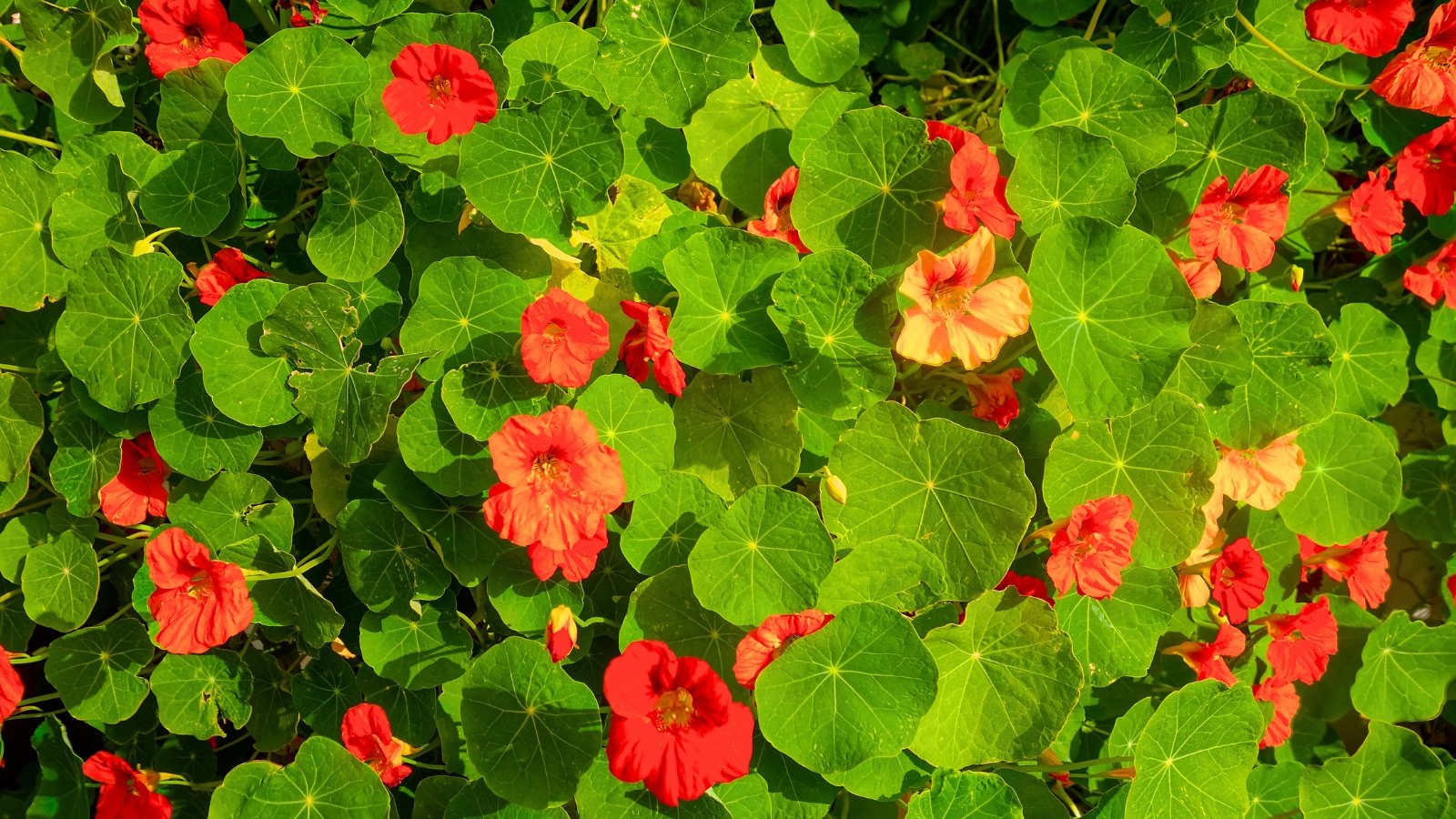 Fast-growing vines with edible flowers and leaves.
Fast-growing vines with edible flowers and leaves.Nasturtiums have broad, rounded leaves and vibrant trumpet flowers along climbing and cascading stems. They thrive in the mild temperatures of fall and spring and typically flower in 60 to 80 days from sowing.
They also grow as houseplants year-round. Sow them indoors to grow in a bright location.
While they enjoy moderate temperatures, nasturtium won’t withstand a heavy frost. Compact varieties like ‘Tom Thumb’ and ‘Jewel Mix’ are early maturing for a swift display. The edible leaves and flowers make a lovely garnish for salads and platters.
Rose Mallow
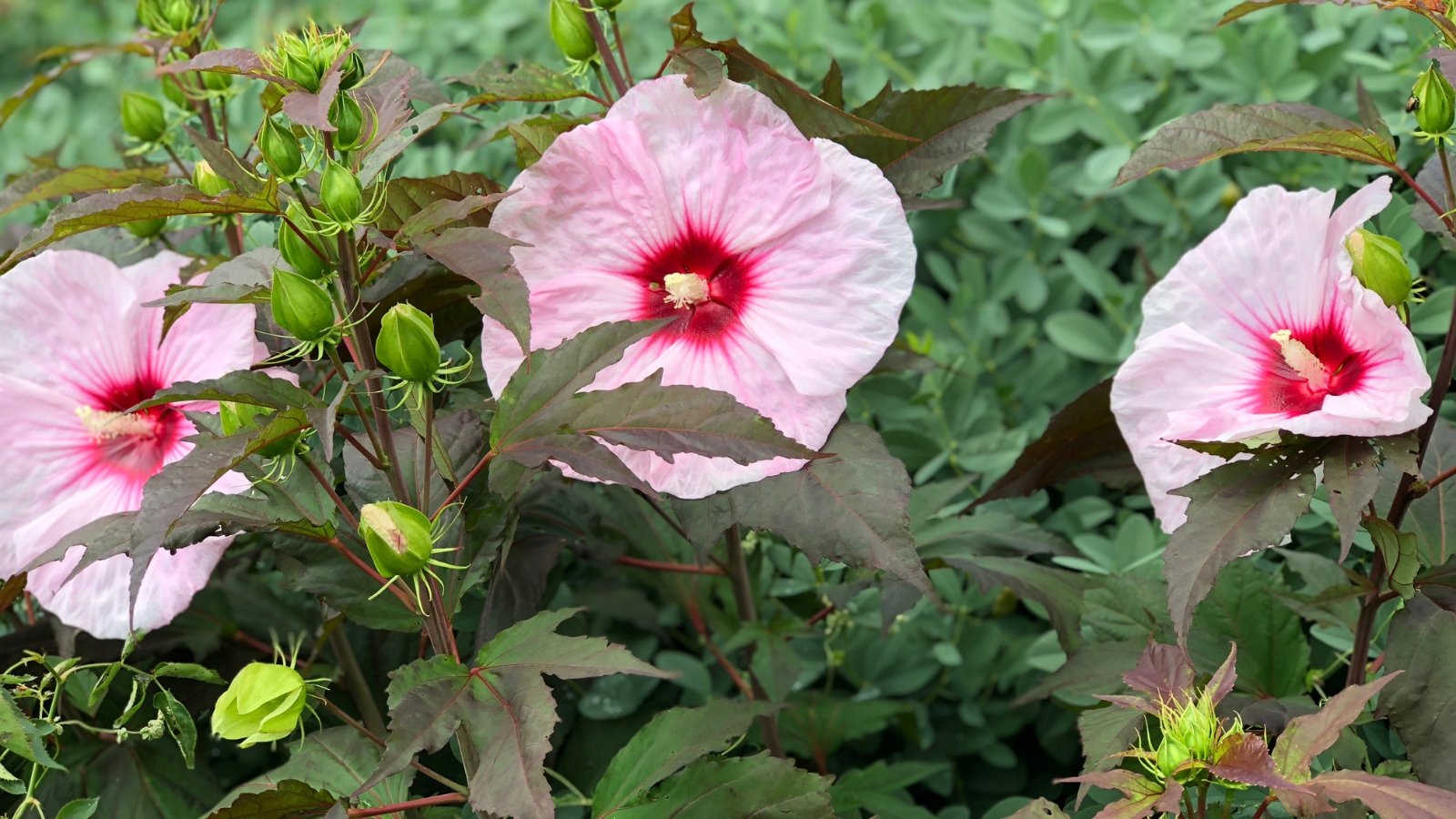 Huge midsummer blooms appear on moisture-loving plants.
Huge midsummer blooms appear on moisture-loving plants.Rose mallow, or hardy hibiscus, offers huge disc flowers and dynamic foliage. North American native mallows include H. moscheutos, H. laevis, and H. coccineus. Their hardy hybrids feature improved landscape durability and superlative flowers and leaves.
The hibiscus blooms emerge from midsummer through fall and range from pale pink to deep scarlet. Although leaves and buds are slow to appear in spring, the show unfolds quickly when they awaken.
Adding to their visual interest are deeply lobed leaves that range from green to mottled and deep plum to nearly black. Mallows tolerate different soil types but rely on consistent, evenly moist soils and won’t withstand prolonged dry spells.
French Marigolds
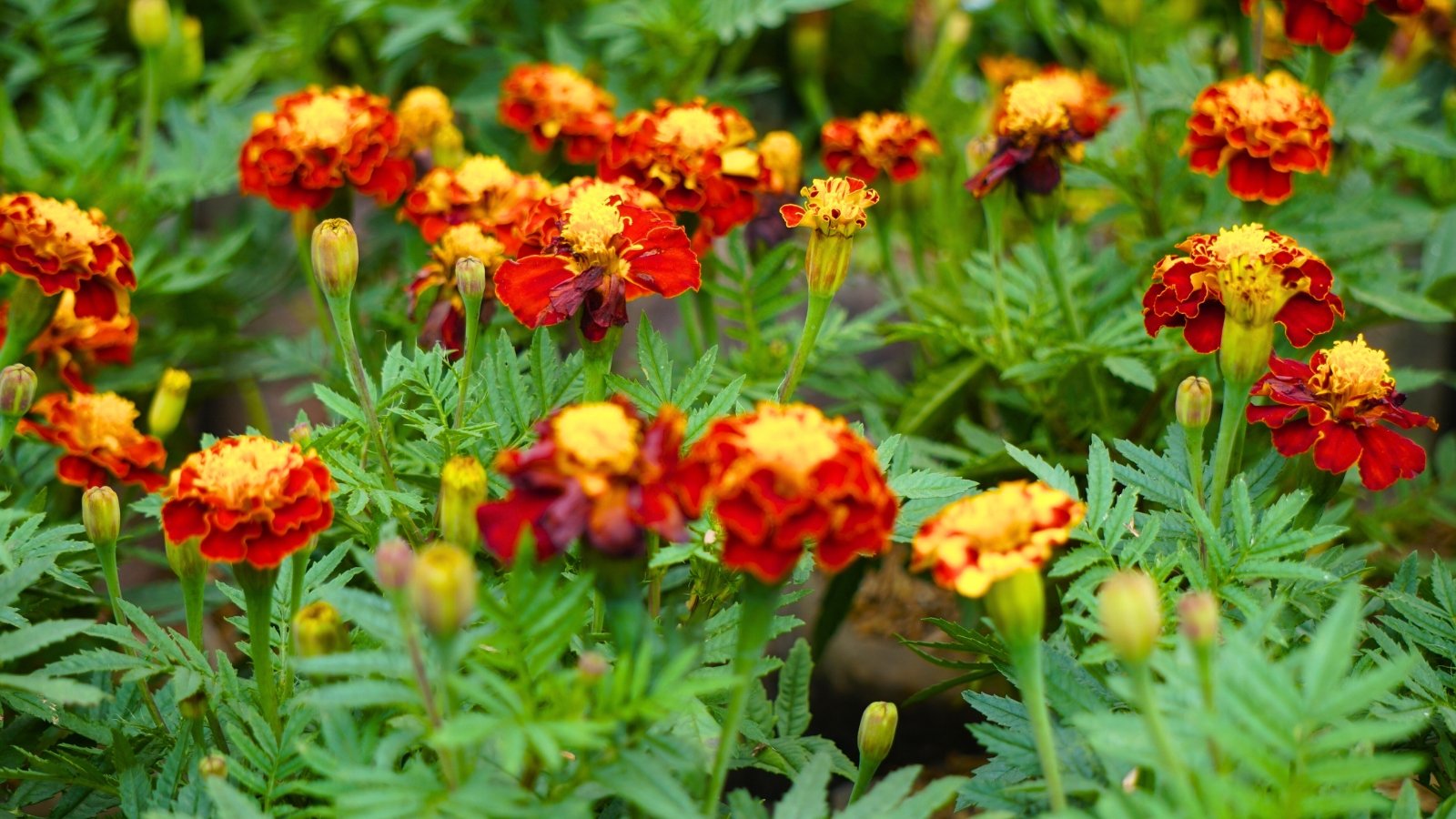 Blooming resumes as cooler weather returns.
Blooming resumes as cooler weather returns.French marigolds bring a succession of pompom blooms in single or double forms. In rich yellow, gold, and garnet, the frilled petals shine against dark green, feathery foliage.
‘Lemon Drop’ brings prolific blooms in cheerful yellow. It has a dwarf habit and fragrant leaves and petals. Marigolds pop up easily from seed and flourish until deep frost. They’ll slow in the heat of summer and resume flowering as cooler temperatures arrive.
Marigolds prefer organically rich soils with good drainage. Deadheading spent blooms promotes budding and blooming, especially to continue the aesthetic into fall.
Scarlet Flax
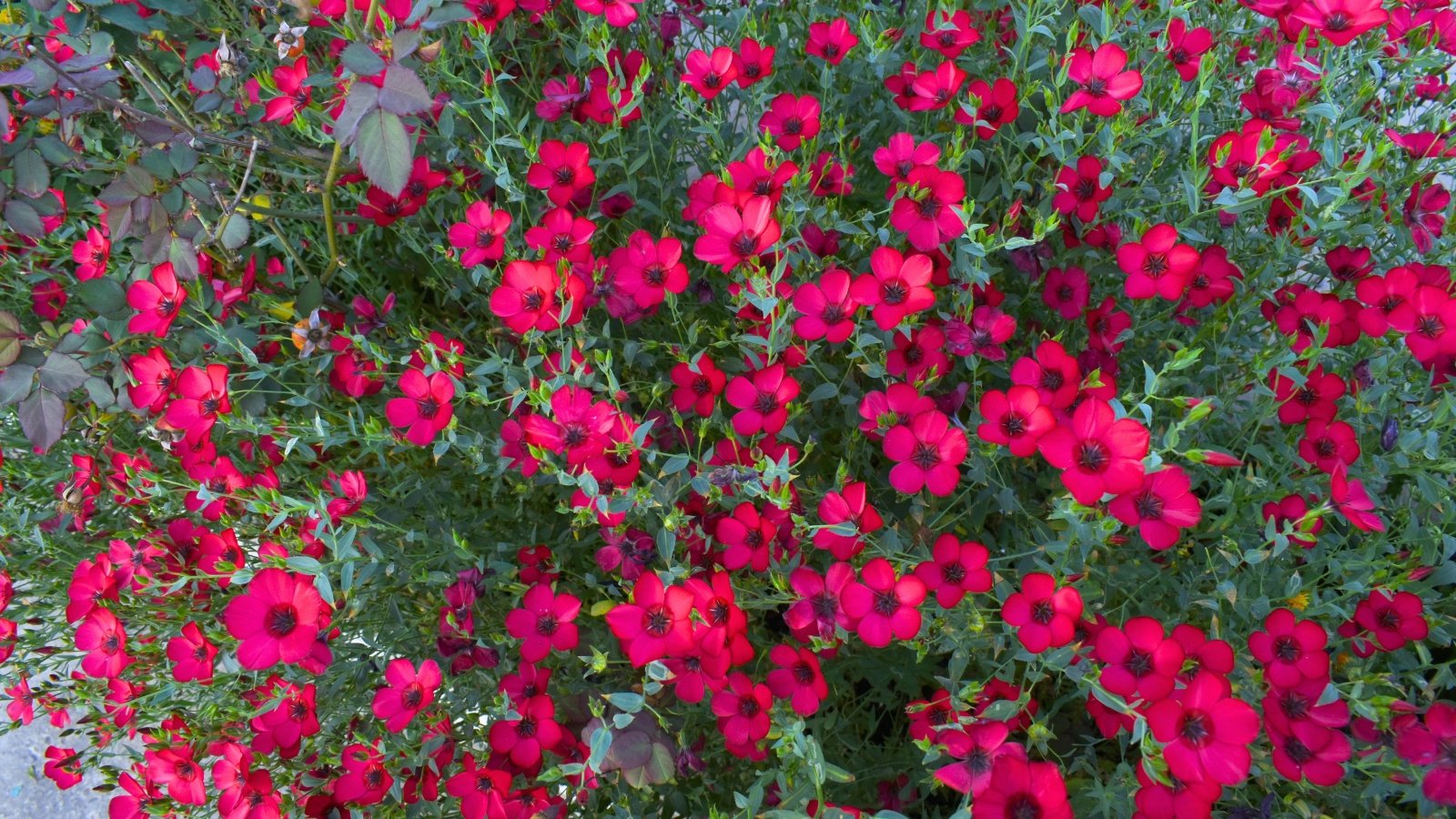 Direct sow and enjoy blooms in weeks.
Direct sow and enjoy blooms in weeks.Scarlet flax is an heirloom annual with a flurry of red flowers that attract pollinators. It’s an easy bloomer and self-seeds for seasons of color. Deadhead spent flowers to prevent unwanted volunteers if you don’t want these plants to fill all gaps in your garden.
The low-maintenance annuals grow in variable conditions that include heat, humidity, and cool weather. Direct sow ‘Scarlet’ by scattering seeds on moist soil and gently tamping for contact. The seeds require light exposure to germinate, so there’s no need for soil coverage. Sow them in spring and every four weeks through fall, in late summer for a fall display.
Sedum
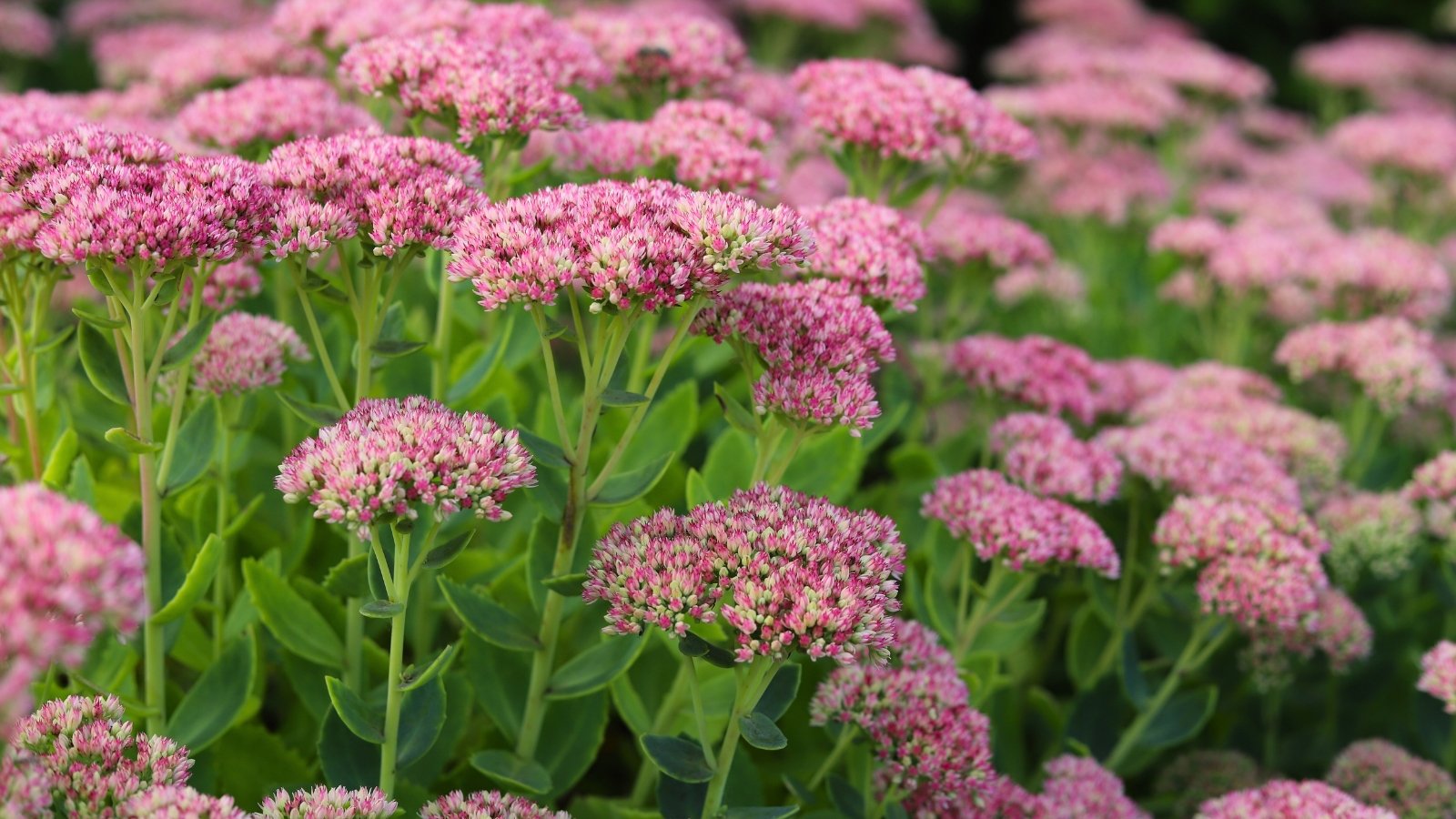 Spreads with fleshy leaves and blooms into fall.
Spreads with fleshy leaves and blooms into fall.Sedum, or stonecrop, is a perennial with succulent foliage in exciting colors, shapes, and textures. Heat-tolerant, they range in height from low-spreading groundcovers to upright mounds. In addition to the foliar interest are blooms that typically show in late summer and fall.
The favorite Hylotelophium ‘Autumn Joy’ has large clusters of starry flowers. The late-season blooms emerge as pink flowerheads and gradually become deep rose-red, fading to copper as they mature. Silvery green, thick, and broad leaves are attractive from spring through heavy frost.
For a fall-flowering groundcover, opt for Sedum ‘Yellow Brick Road.’ The low-growers have deep green, mounding, spreading foliage. Small yellow blooms create a carpet of color in mid to late summer and early autumn.
Sedums are drought-tolerant and rely on well-draining soil to thrive. Butterflies enjoy the late-season flowers as a food source. Let them persist on the stem through the cool season for added interest.
Sweet Alyssum
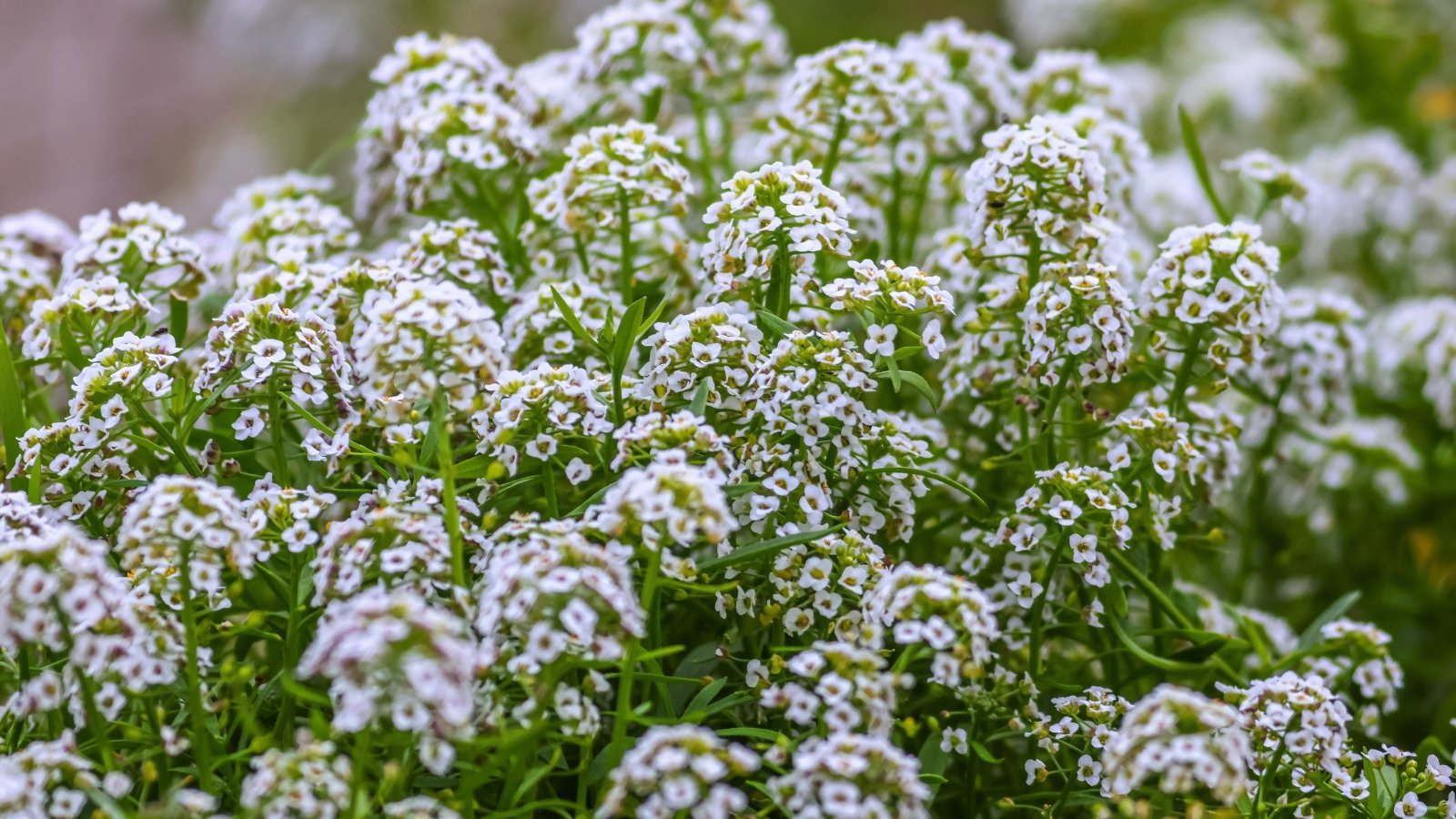 Fragrant groundcover that self-seeds for spring.
Fragrant groundcover that self-seeds for spring.Sweet alyssum is a short-lived perennial with a blanket of pincushion blooms in spring and fall. The petite charmer is a great plant to fill gaps in pots or the front of the border. Their sweet fragrance attracts pollinators and other beneficial insects.
Sweet alyssum is hardy down to 20°F (-7°C). It self-seeds, and volunteer seedlings may pop up the following spring.
In the heat of summer, the foliage turns yellow and fades but rebounds with cooler temperatures. Treat them as cool-season annuals for spring and fall in hot, southern zones.
Yarrow
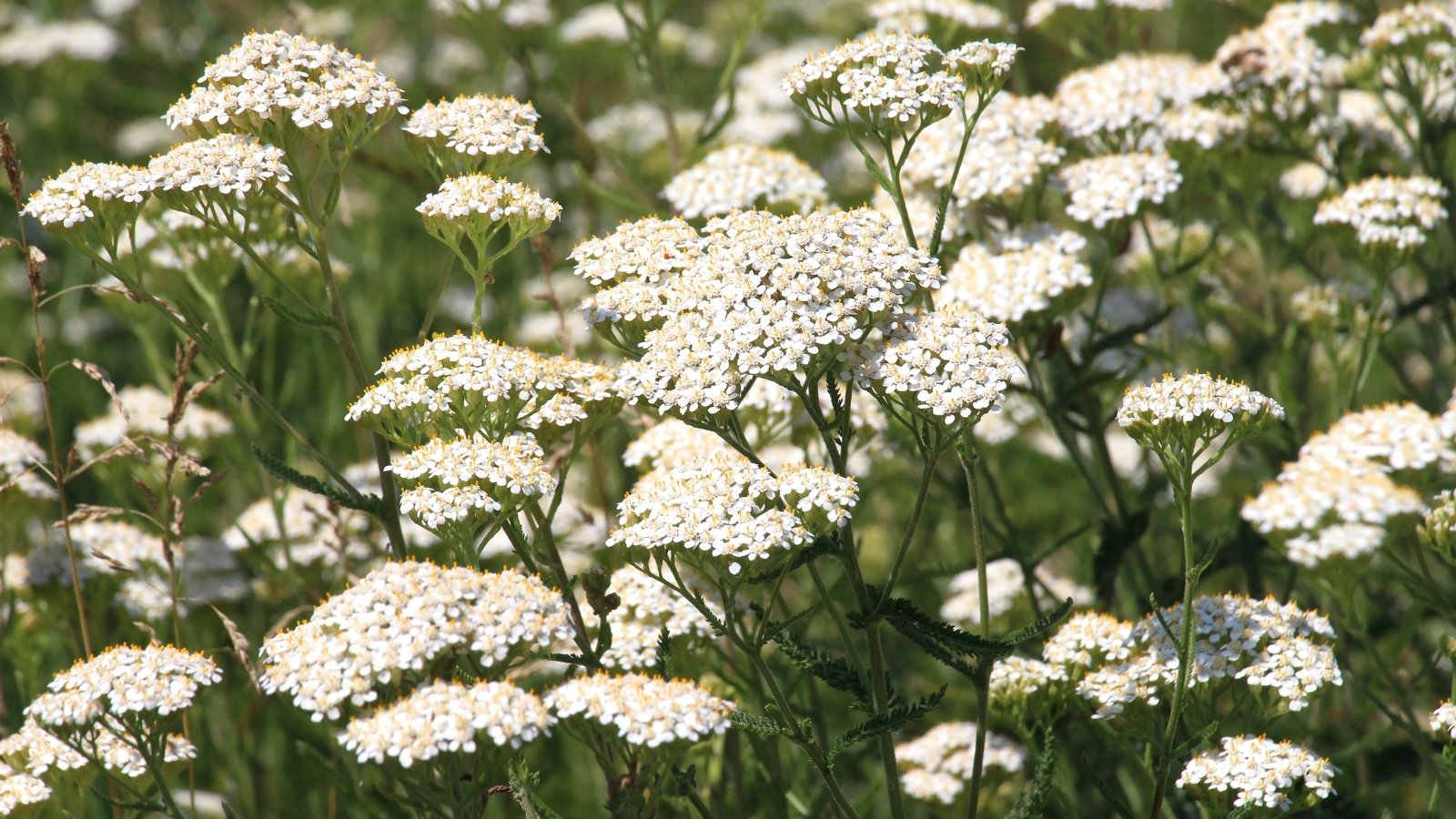 Fills gaps fast and thrives on neglect.
Fills gaps fast and thrives on neglect.Yarrow is an adaptable North American native perennial with fine-textured, ferny foliage and large flowerheads that are magnets for butterflies and other pollinators. The species boasts broad, milky flower clusters atop tall, upright stems. Numerous cultivars bring improved form and flowering in color-saturated hues.
Yarrow is a low-maintenance and drought-tolerant perennial. It thrives with a bit of neglect in a sunny spot with well-draining soil.
Install nursery specimens to get a jump start on full leaves and flowering, or sow seeds in the fall or winter to benefit from cold stratification for germination. The plants quickly fill gaps in spring.
Hydrangea
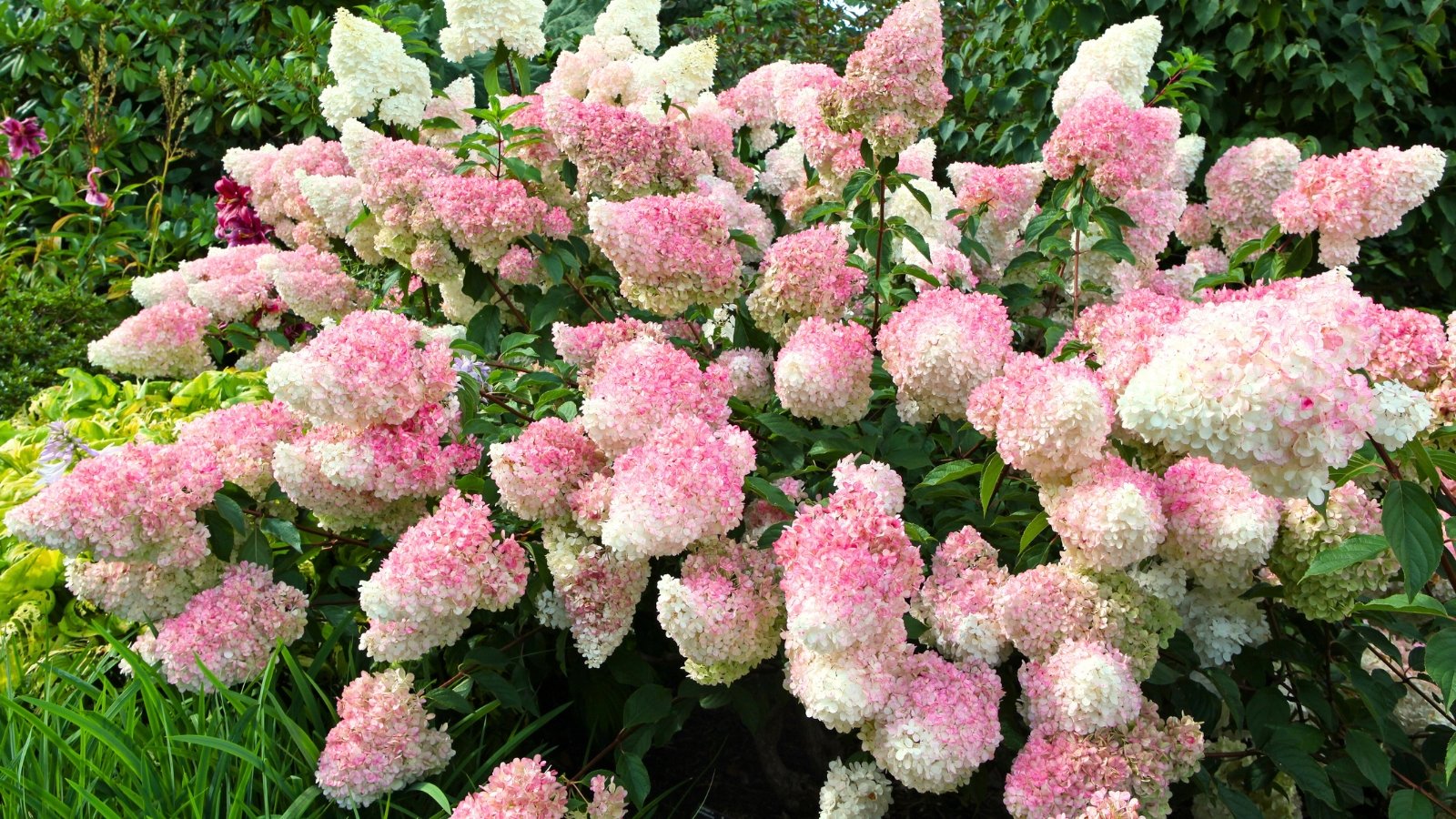 Panicle types add up to two feet yearly.
Panicle types add up to two feet yearly.Hydrangeas bring broad leaves and massive flowerheads, whether a single-season bloomer with a long bloom time or a repeat performer. With six common species and numerous cultivars, there’s a hydrangea for nearly every garden. Large, mounding varieties make a statement in a hedge, foundation planting, or as a single specimen.
For fast growth to quickly fill a larger garden gap, opt for panicle hydrangeas (H. paniculata). These are among the most adaptable of the group in terms of sun exposure and hardiness. They can grow as much as one to two feet per year for a height of 6 to 15 feet tall (smaller with annual pruning).
In addition to the straight species (also called peegee hydrangeas), there are panicle varieties with refined forms and flowers. ‘Limelight’ is a classic with creamy white and chartreuse blooms. ‘Limelight Prime’ is a newer cultivar with sturdier stems to support the huge flower clusters, while ‘Little Lime’ packs the same floriferous punch on a dwarf form.


 12 hours ago
4
12 hours ago
4
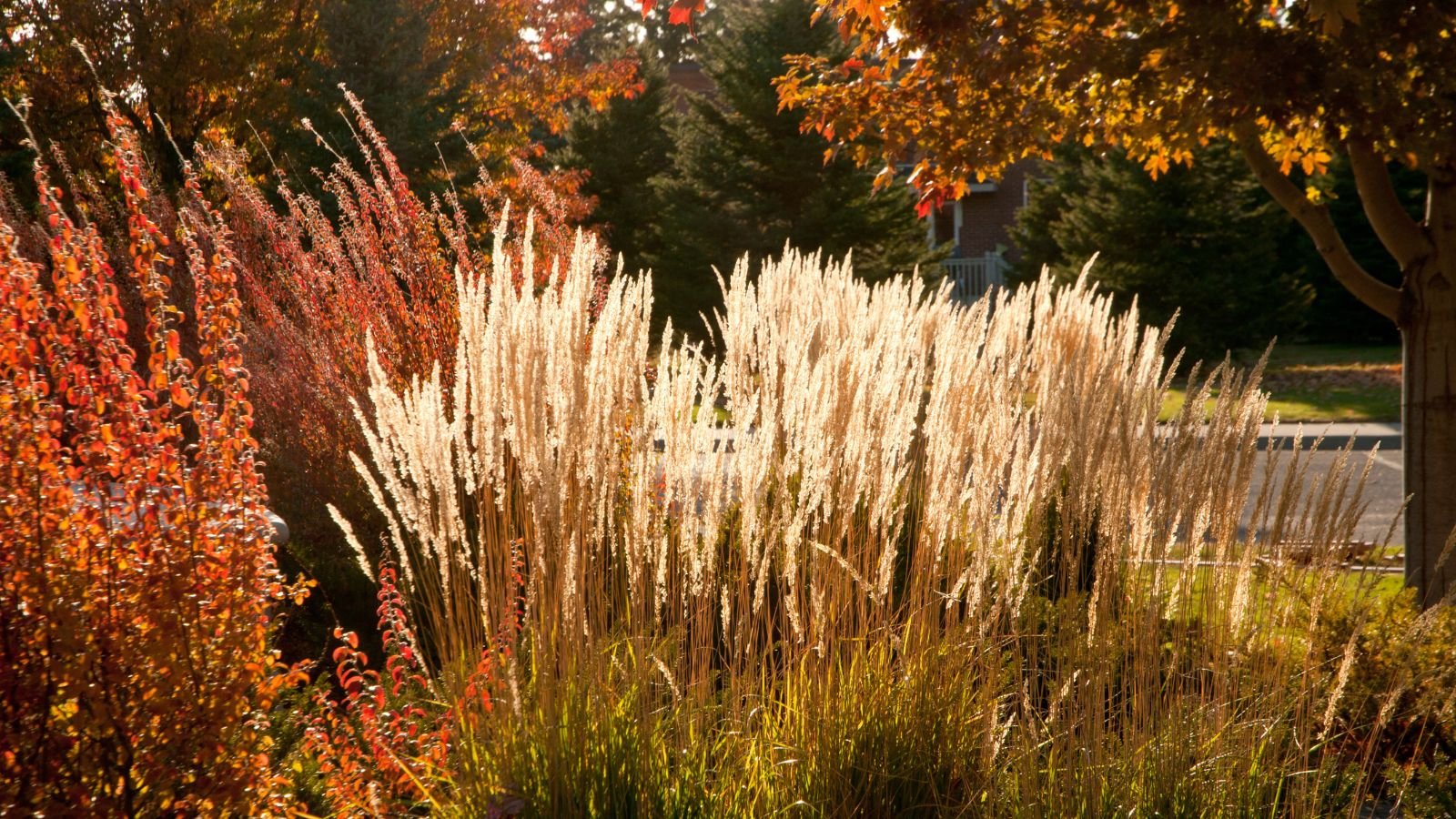


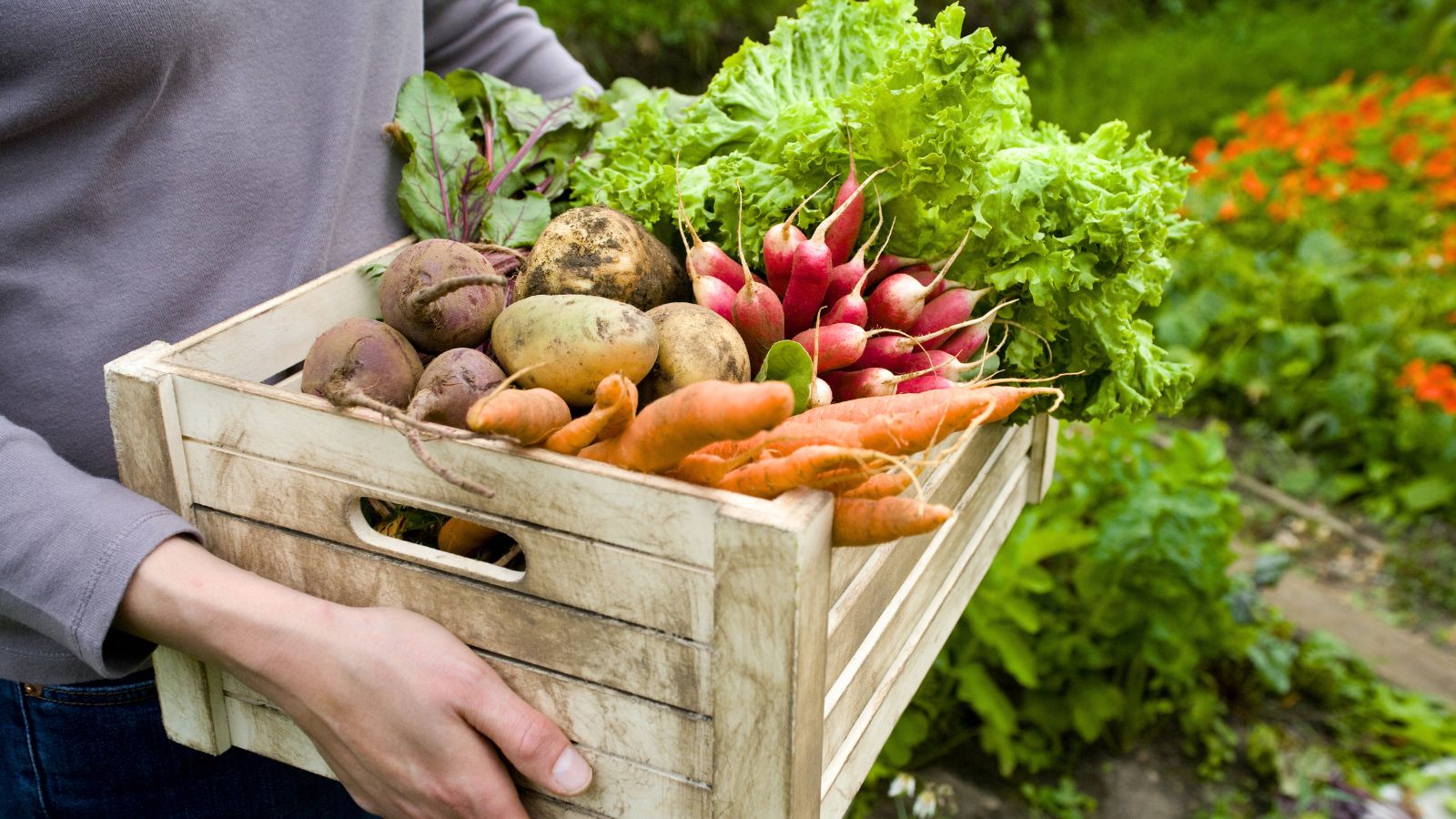


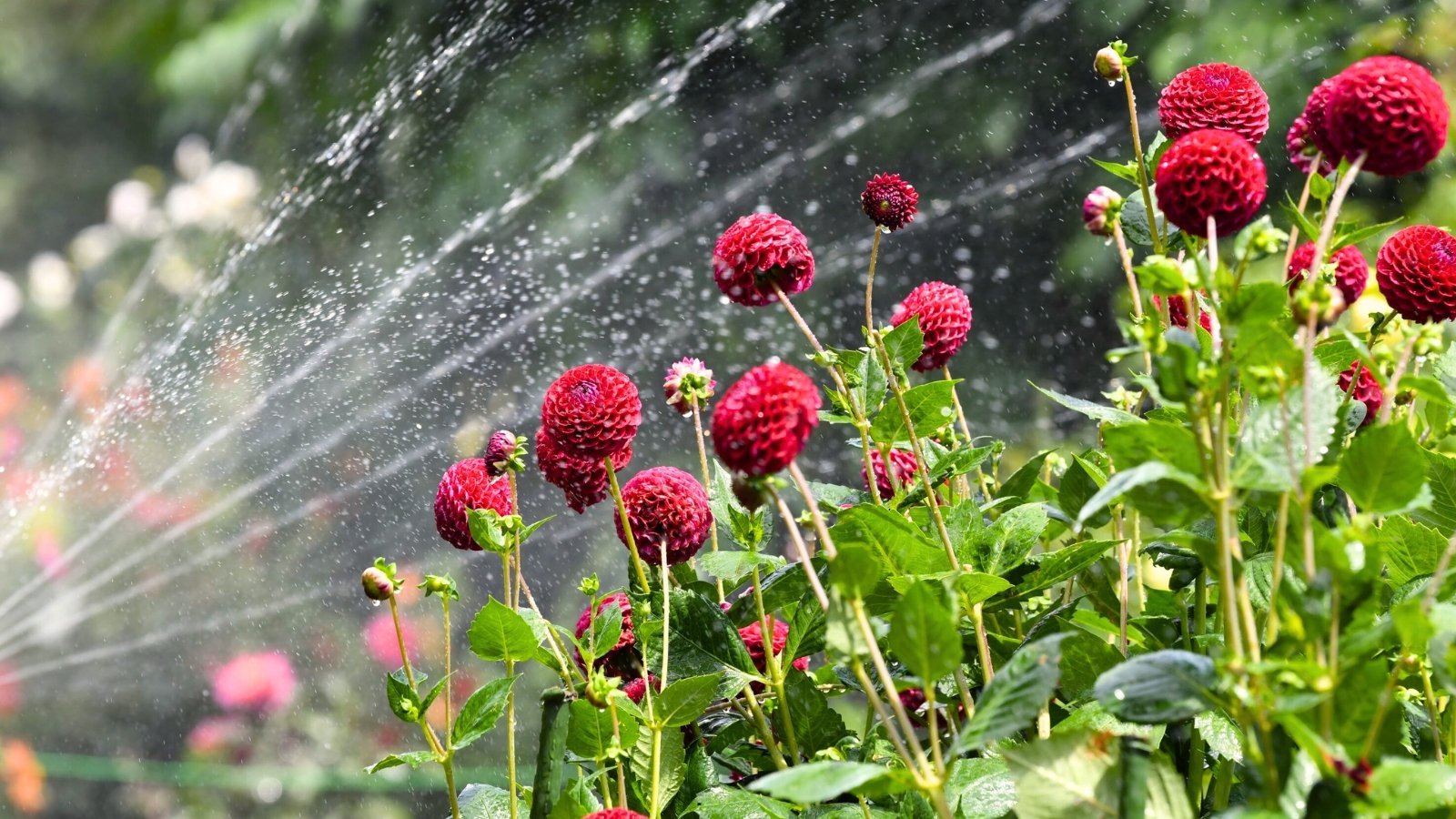














 English (US) ·
English (US) ·  French (CA) ·
French (CA) ·